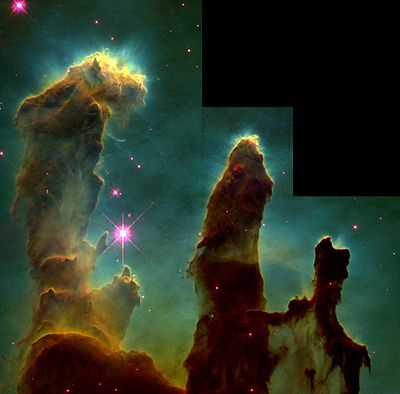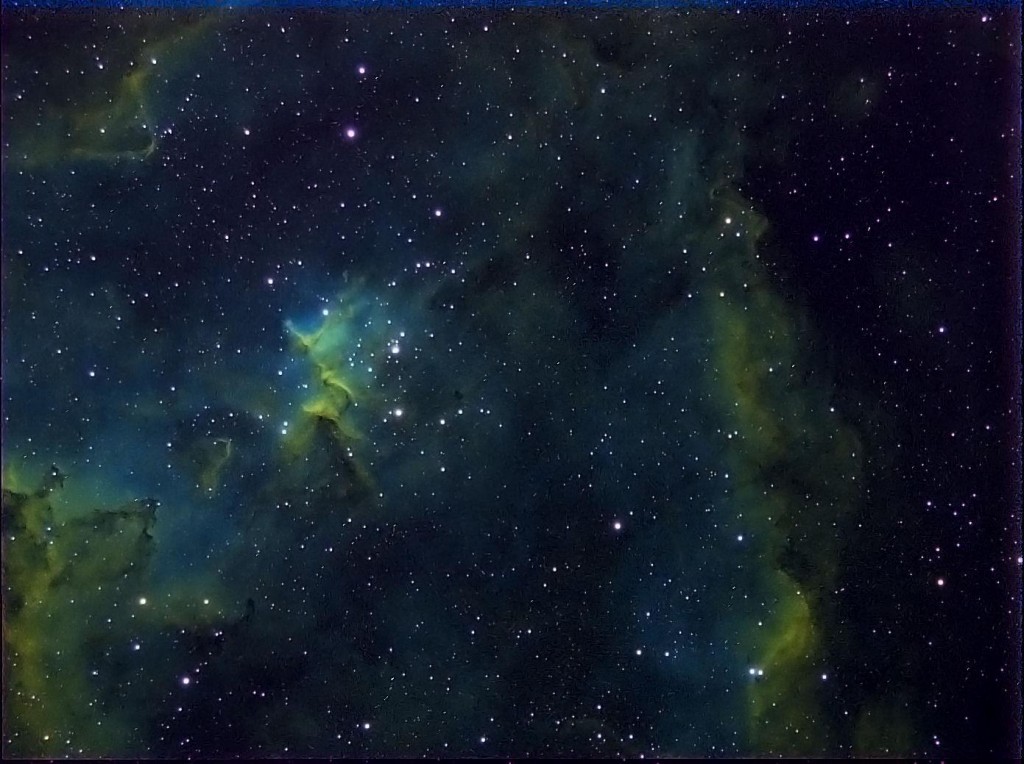A NEBULA is an interstellar cloud of dust, hydrogen, helium and other ionized gases. Originally, nebula was a name for any diffuse astronomical object, including galaxies beyond the Milky Way. The Andromeda Galaxy, for instance, was referred to as the Andromeda Nebula (and spiral galaxies in general as “spiral nebulae”) before the true nature of galaxies was confirmed in the early 20th century by Vesto Slipher, Edwin Hubble, et. al. Nebulae are often star-forming regions, such as in the Eagle Nebula. This nebula is depicted in one of NASA’s most famous images, the “Pillars of Creation”. 
In these regions the formations of gas, dust, and other materials “clump” together to form larger masses, which attract further matter, and eventually will become massive enough to form stars. The remaining materials are then believed to form planets, and other planetary system objects.
Types of Nebulae
Objects named nebulae belong to four major groups. Before their nature was understood, galaxies (“spiral nebulae”) and star clusters too distant to be resolved as stars were also classified as nebulae, but no longer are.
- H II region” are large diffuse nebulae containing ionized hydrogen
- Planetary nebulae
- Supernova remnant (e.g., Crab Nebula)
- Dark nebula
